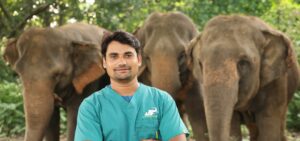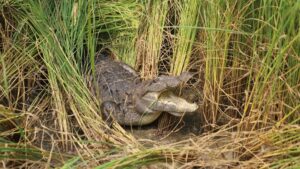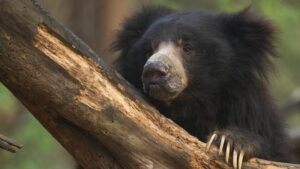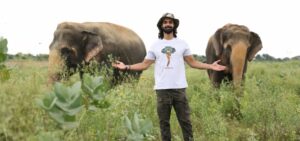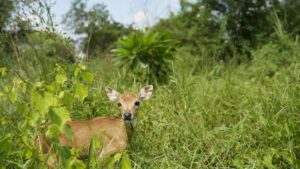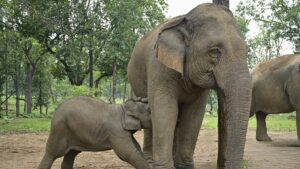Once upon a dusky evening in a small village surrounded by farmlands and cattle, a young boy watched his family’s livestock graze under the open sky. A veterinary doctor stood nearby, quietly treating a sick buffalo with a precision that fascinated him more than any textbook ever could. The boy didn’t know it then, but something had shifted. Somewhere between the scent of earth after rain and the soft rustle of straw, a silent vow was made that one day, he too would learn the language of healing.
This is the story of Dr. Pramod Rajpoot, who is now the Veterinary Officer at Wildlife SOS’s Elephant Hospital Campus (EHC) in Mathura. While most would shudder at the sight of infected wounds or twisted limbs, he approaches every case with the steady patience as someone who understands that pain has no language. His hands have tended to some of the most emotionally and physically wounded elephants in the country, and yet, you’ll rarely find him talking about his accomplishments. Calm as a monk and grounded like the land he comes from, Dr. Pramod’s presence alone offers comfort to the animals he treats and the people who work beside him.
If life hadn’t led him to this path, he might have been trading crops at a mandi. But his willingness to care for animals has brought him a stethoscope and some of the most resilient beings on Earth, the elephants.
So what does it take to observe the giants in distress, and still return every day with beaming hope? To hold the belief that compassion can surely overcome trauma? Let’s step into the quiet world of Dr. Pramod, and discover the steady heartbeat behind every recovery, every rescue, and every elephant whose story continues because he refuses to give up.
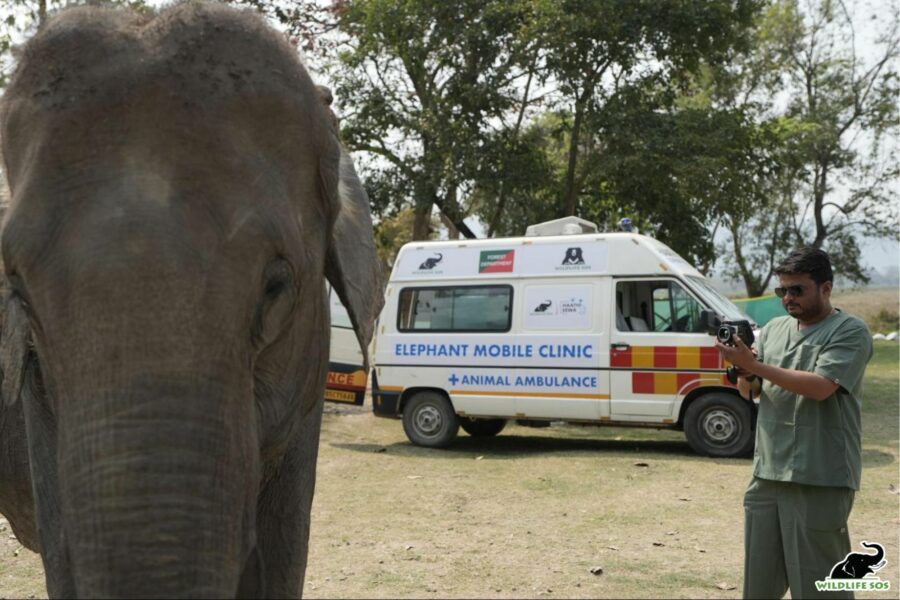
Did you always want to go into the veterinary profession? What was your relationship with animals like?
I come from a farming family and spent the first quarter of my life in my village. As farmers, our lives revolve around animals who assist in agriculture. We always had around five to six cows and buffaloes. Whenever any of them got sick, we would call the local veterinarian, who would visit, observe the animal, and provide medication or treatment as needed. Watching this process repeatedly and also being the one who had to go and call the vet made me wonder — why not learn how to treat the animals myself.
That curiosity sparked my interest. I started observing the vets more closely, taking notes on the treatments, and slowly, my fascination with veterinary medicine took shape. After completing school, I began exploring the medical field and ultimately decided to pursue veterinary science.
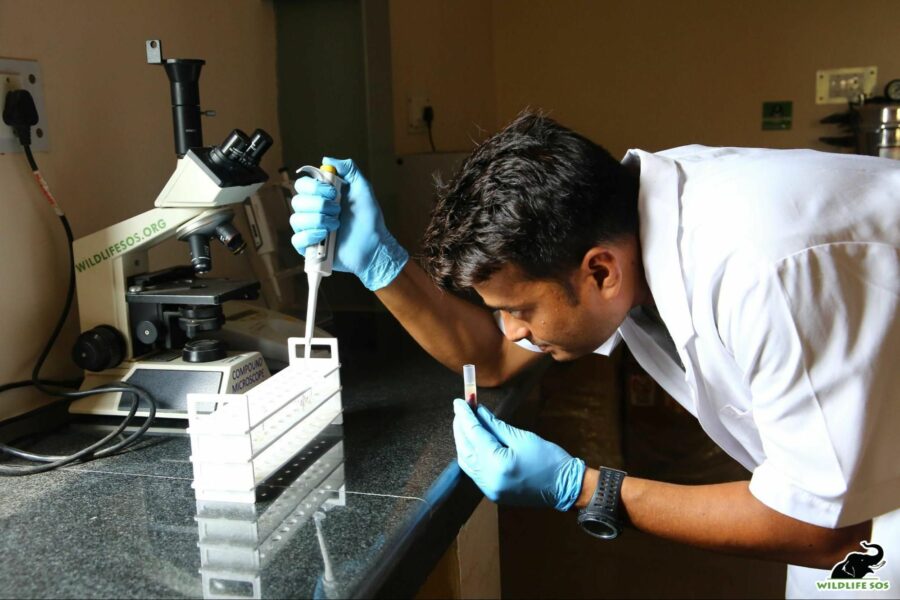
I had also prepared for a seat in human medicine and even appeared for the entrance exam. Although I didn’t get into that medical school, I did secure a seat in a veterinary college and I can still remember the happiness I felt in that moment. Being from a small village, this achievement was celebrated by my family and community, which further strengthened my resolve and pushed me closer to my goal.
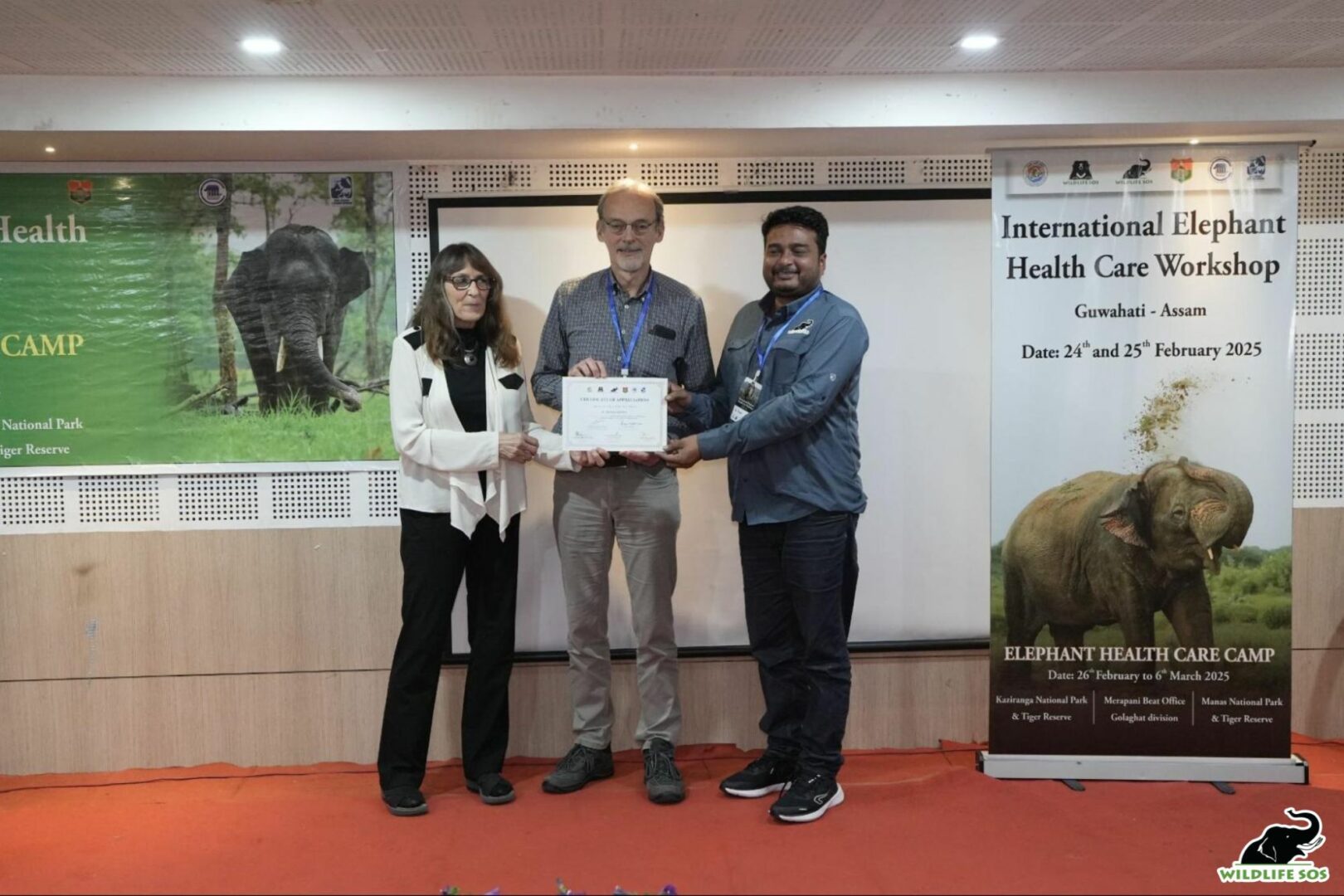
How did you come across Wildlife SOS?
Once I completed my academic training, I began exploring career opportunities in animal conservation. Unfortunately, at that time, India had very limited job openings in the animal conservation sector. I ended up taking a job in a company, but I found no real satisfaction in the work. My inspiration was fading. While researching organisations that actively care for and treat animals, I was even prepared to work in a goshala (cowshed) just to feel that my service to animals was meaningful. But fate had other plans. One day, tucked away in a corner of a newspaper, I saw an article announcing the inauguration of India’s 1st Elephant Hospital Campus in Mathura. I didn’t think twice. I immediately reached out to them, and with my dedication and perseverance, I eventually joined Wildlife SOS in 2018.
One of the biggest flaws in veterinary education in India is that wildlife medicine is barely covered — it’s merely a chapter in the final year. So, getting a job with Wildlife SOS felt like both a blessing and a much-needed hands-on learning opportunity.
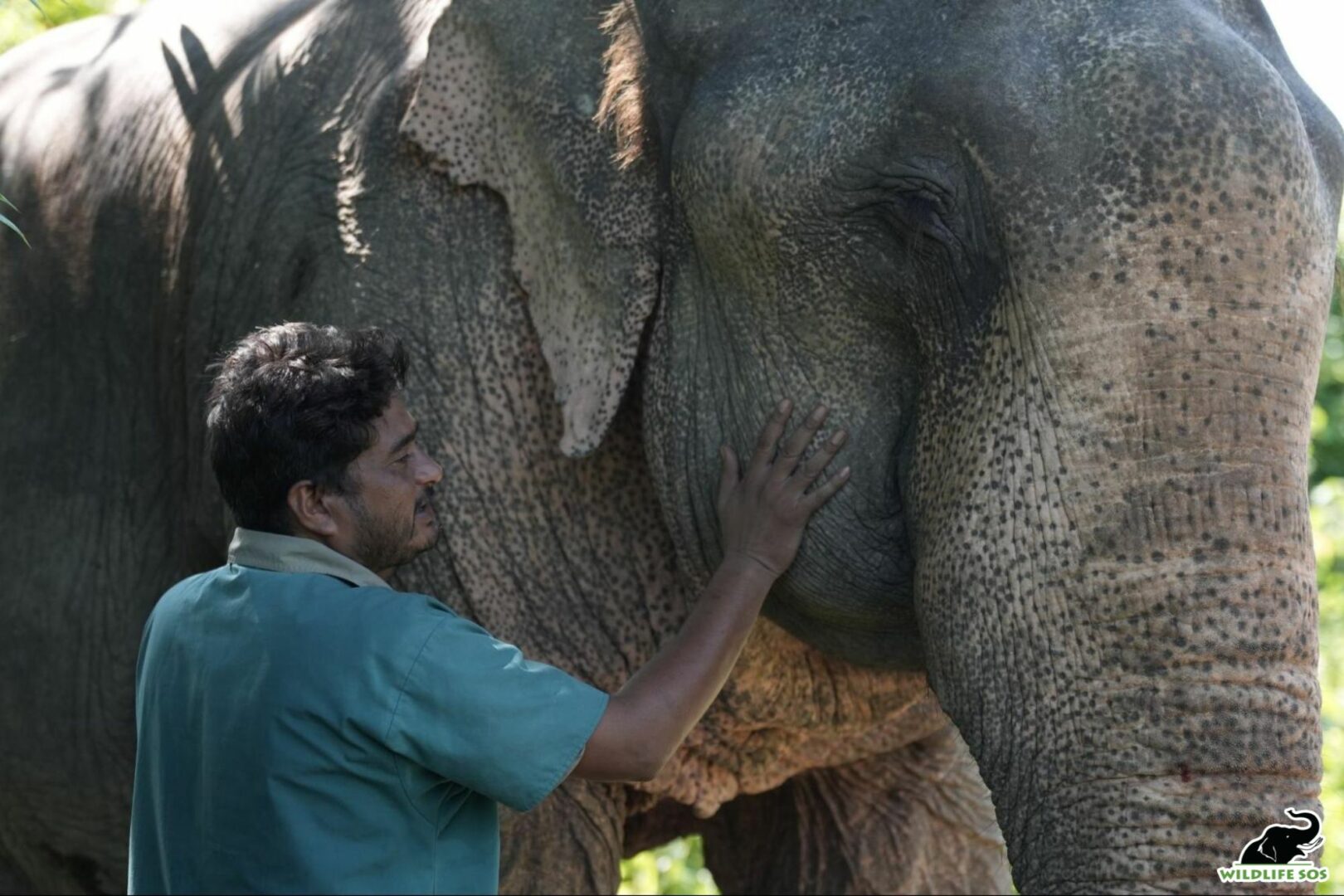
What was it like treating wild animals for the first time? And do you have a favourite animal species?
Before joining Wildlife SOS, I had never treated a wild animal. Wildlife SOS gave me the platform to channel my curiosity and start a learning journey that has been incredibly fulfilling. The first time I encountered elephants up close and learned about their past traumas, it hurt me deeply. Elephants are majestic and powerful, but they’re also emotionally sensitive. They’re mindful of their surroundings and build deep, meaningful bonds.
While I don’t have a single favourite species, I find wolves incredibly interesting. They’re one of the few species that have never been domesticated for performances. Their teamwork, discipline, and sense of community are admirable. We humans have so much to learn from them.
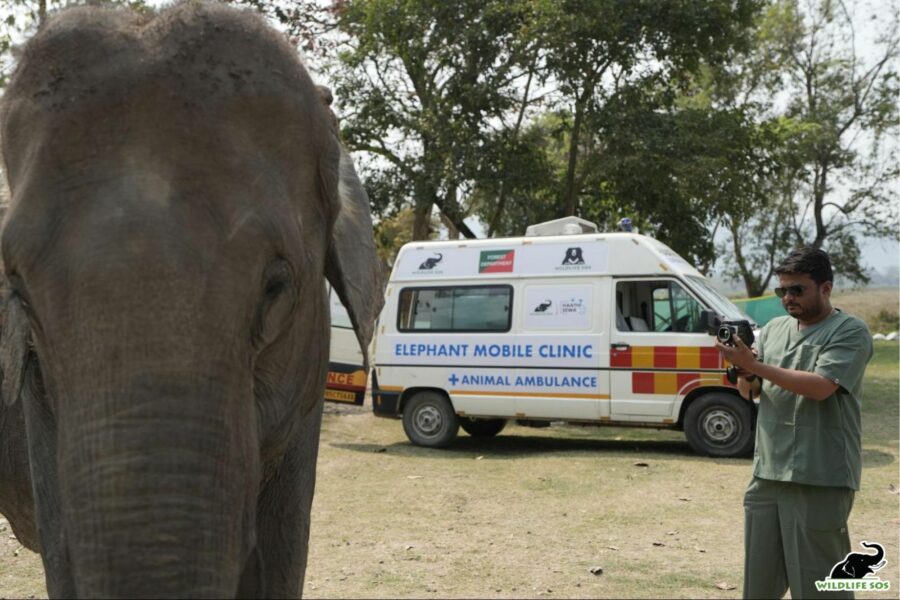
Can you walk us through your day at the Elephant Hospital Campus?
My day begins with observing the husbandry practices for the elephants — checking if the water bodies are cleaned, the enclosures are well-maintained, and so on. This phase takes a few hours as I go around every elephant area and ask caregivers how the elephant is faring, if the elephant slept well at night or was any restlessness noticed. Caregivers finish their breakfast, and after that, the treatment phase begins. This includes bathing, foot pad cleaning, general checkups, and clinical examinations.
After lunch, we prepare the elephants’ food, especially fruit and concentrated porridges, ensuring that any necessary medication is also mixed in. Once they’ve eaten, we start recording data and updating our reports. Before wrapping up, we conduct one final check of all the enclosures. But being a vet isn’t a regular 9 to 5 job — it’s round-the-clock care. Emergencies can happen any time, and we must always be prepared. It’s not just work; it’s a responsibility — one that every vet carries with commitment.
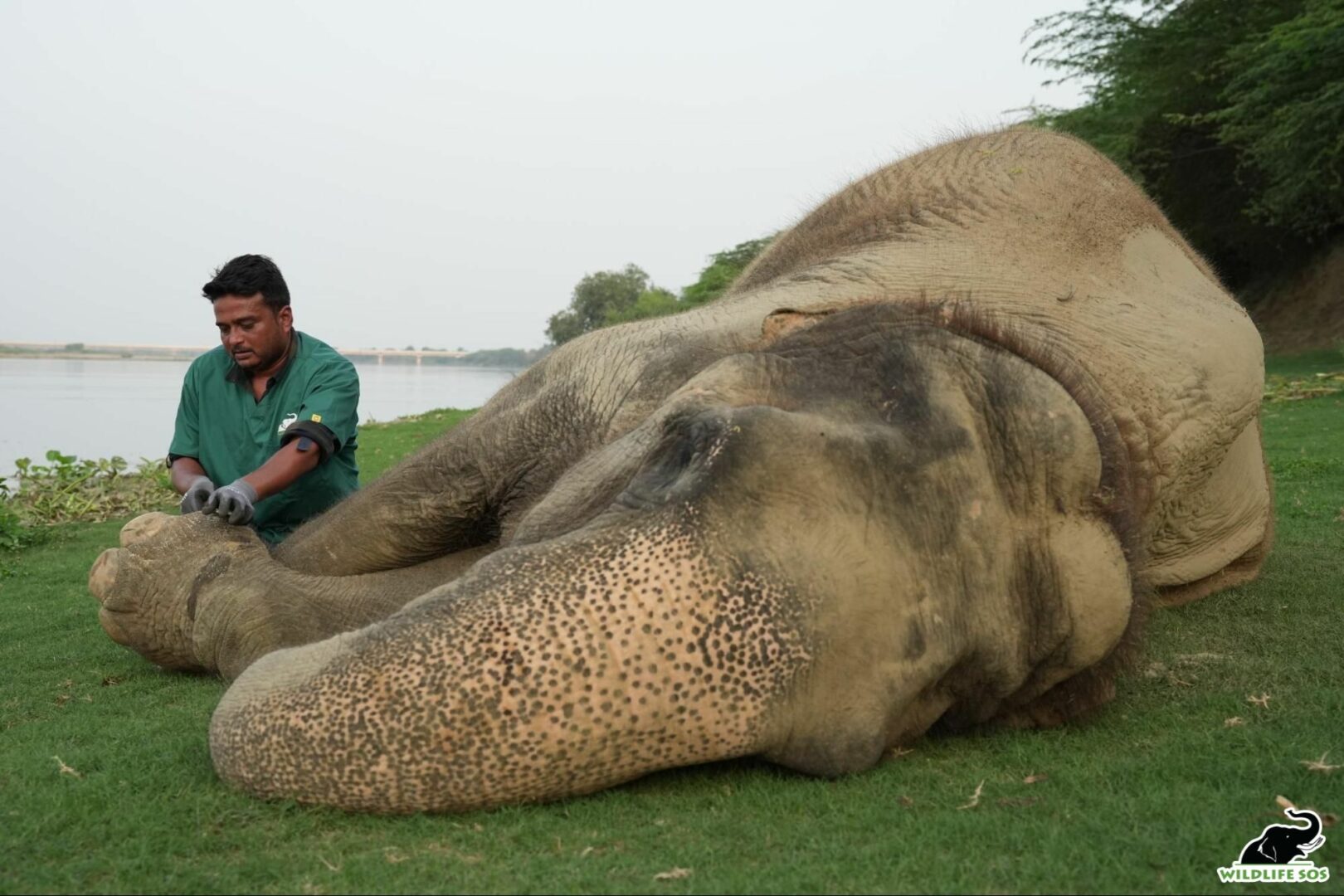
Which was your first wildlife case at Wildlife SOS? Do you have any favourite elephants at Wildlife SOS?
I joined in 2018, and a few months later, I was assigned to Holly’s rescue. She was 60 years old at the time and suffering from multiple issues: complete blindness in both eyes, septic and chronic shoulder wounds, joint disorders, severe arthritis, untreated abscesses, infected foot pads, and overgrown toenails. The moment I touched her during her initial treatment, I silently promised that I would do everything in my power to give her a better life. That promise turned into a strong bond. Holly is very comfortable around me and actively participates during her treatments. While caregivers are around to assist me, Holly prefers to have me by her side alone during checkups.
Holly is closest to my heart, but Bani is another elephant who brings joy to everyone. She often playfully pushes us, making vets and caregivers fall over — and the whole situation always ends in laughter. Her antics lighten even the most serious moments.
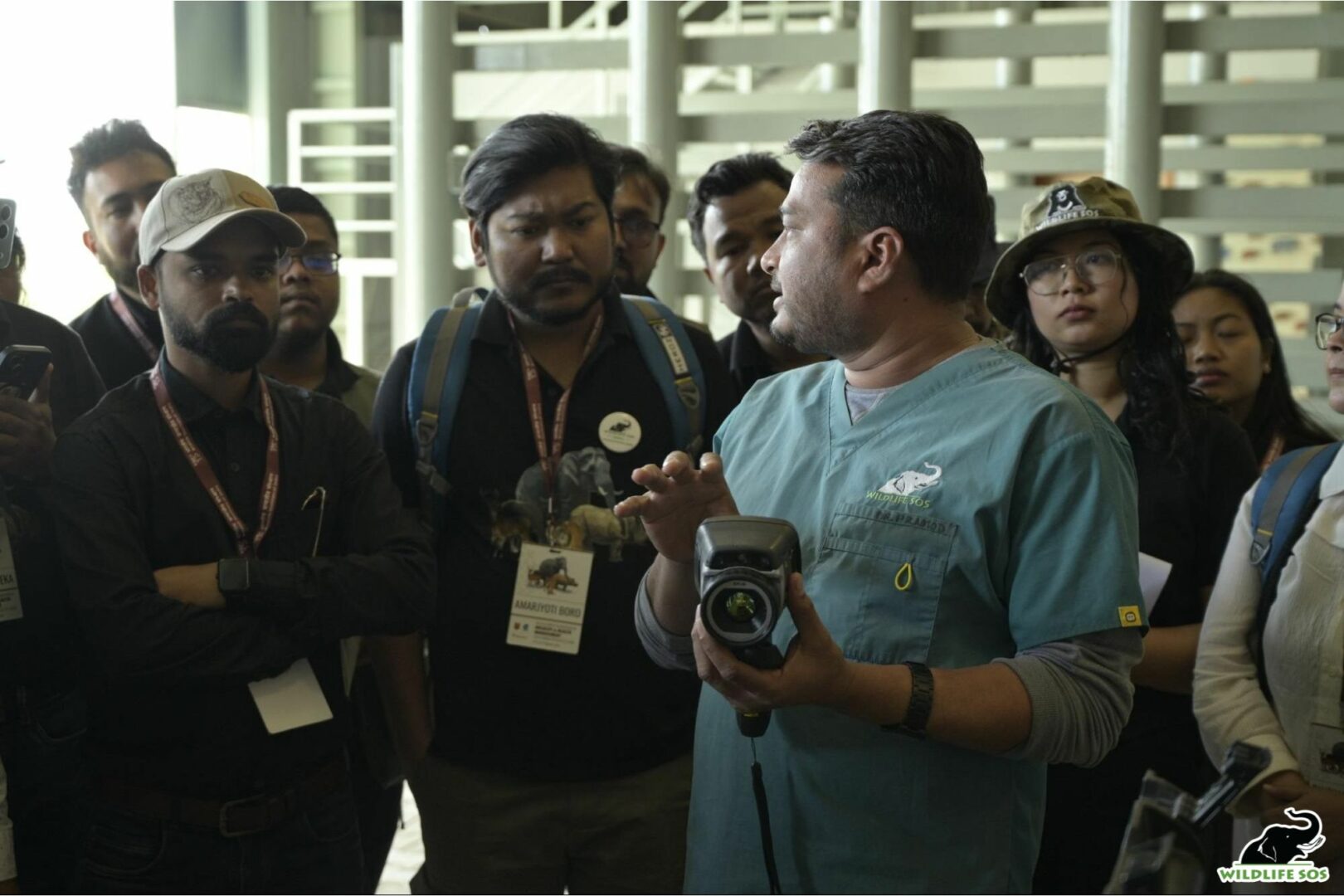
As a vet, what are the most common health issues you’ve seen in elephants?
The two most common health issues I’ve observed in Asian elephants are colic and foot pad problems. The latter includes toenail misalignment, arthritis, and even bone fractures — all of which can originate from improper foot pad care. Leg issues are very common, and that’s why proper treatment and preventive care are essential. Thankfully, Wildlife SOS provides this with great dedication, and we continue to innovate in this area.
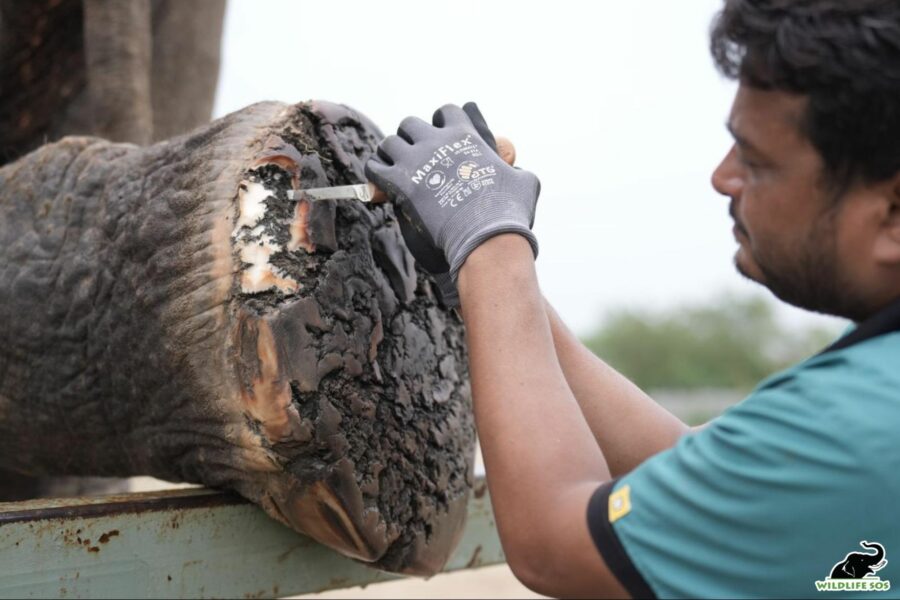
Have you worked with any other species besides elephants?
Yes, apart from elephants, I’m also actively involved in the Human-Macaque Conflict Mitigation Project, so I’ve treated several monkeys. Beyond that, I’ve treated cattle and many other animals throughout my veterinary career.
As I often joke: “If you exclude humans, a veterinarian can treat every animal on the planet.” For us, it’s never about the species — it’s about alleviating pain and treating wounds. Once you focus on that, the type of species no longer matters.
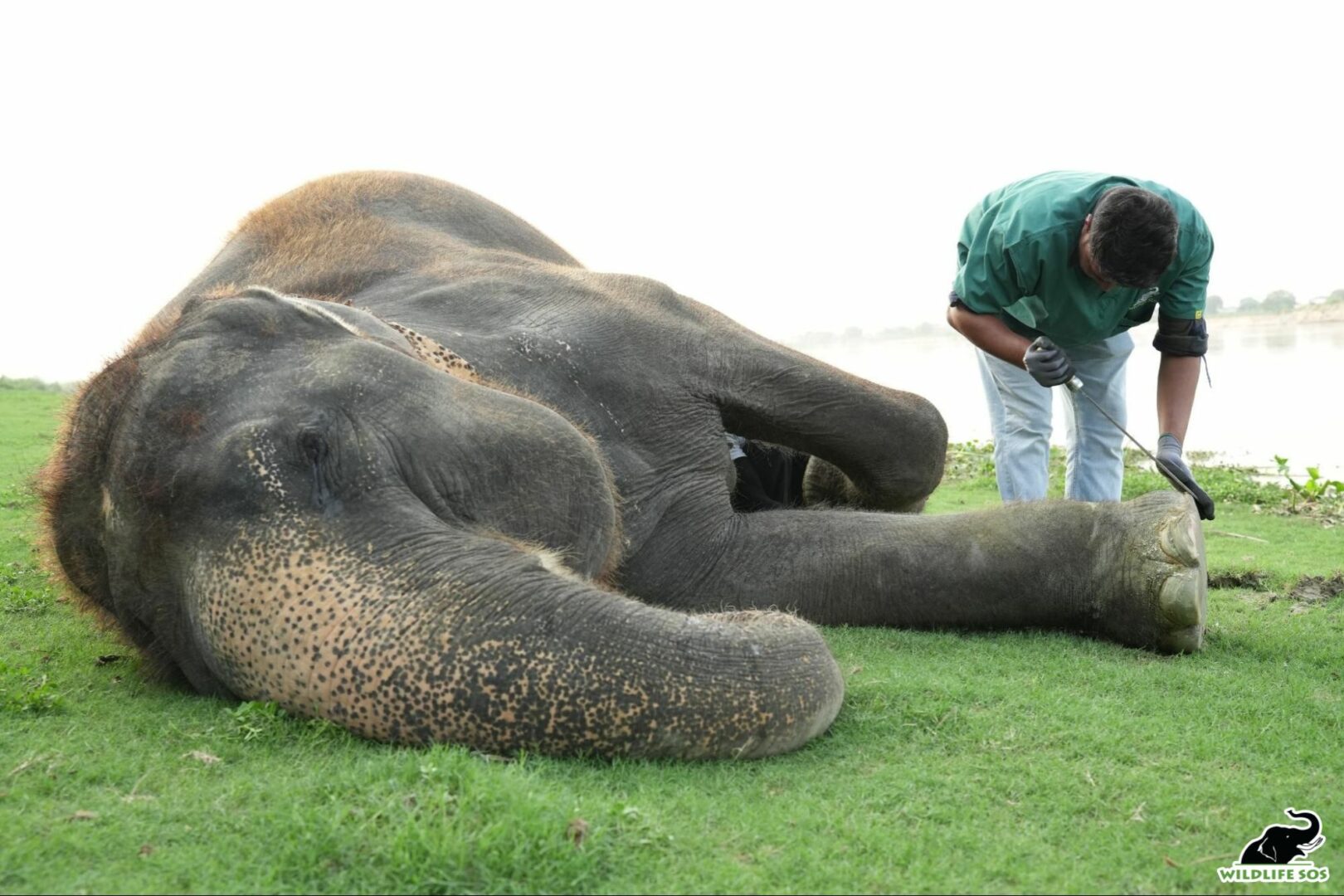
Veterinary work can be emotionally intense. How do you manage your emotions while treating animals that have endured severe trauma?
Elephants are not just animals — they’re more human than many humans because of their deep cognitive and emotional abilities. They can sense what you’re feeling. Of course, as vets, we’re affected internally when we see their pain, but unlike the general public, we don’t have the luxury of showing our emotions. We can’t cry or break down in the field. We must appear calm and confident — both for the sake of the animal and the people watching. That can be difficult, but it’s part of the responsibility. The only emotion we’re allowed to show is in the form of positive results and successful recoveries. Elephants sense those inner emotions and respond accordingly, which is something that continues to amaze me.

What life lessons have you learned from elephants?
The biggest lesson I’ve learned is patience. Elephants are aware of their strength and could easily become destructive, yet they choose calmness. They remain peaceful unless provoked. Their gentleness and understanding, especially when they know you’re helping them, is something that all of us should learn from.

Let’s talk about Holly — your favourite elephant. She’s recovered significantly. How do you feel about her journey?Honestly, it motivates me every single day. When I walk near her enclosure and she acknowledges me, my heart is filled with joy. That joy turns into energy and determination to continue my work.Recently, Holly suffered a fall, and it was a very stressful time for all of us. We used cranes and hydrotherapy to stabilise her. Despite the worry, we didn’t give up — we kept trying every day. Today, she is healthy again. That experience taught me something important: never give up, especially when it comes to elephants. Even when the odds are stacked against you, you must remember your commitment to them. With patience and trust in the process, anything is possible.

What keeps you motivated to come to work every day?
We’ve become somewhat like forest-dwellers — “jungli”, if I may say so! The moment we wake up, we want to get back to the forest. Our lives are now deeply rooted in nature, and being surrounded by animals is a blessing. In fact, crowds and cities actually unsettle us. The peace we get from working with elephants is irreplaceable.
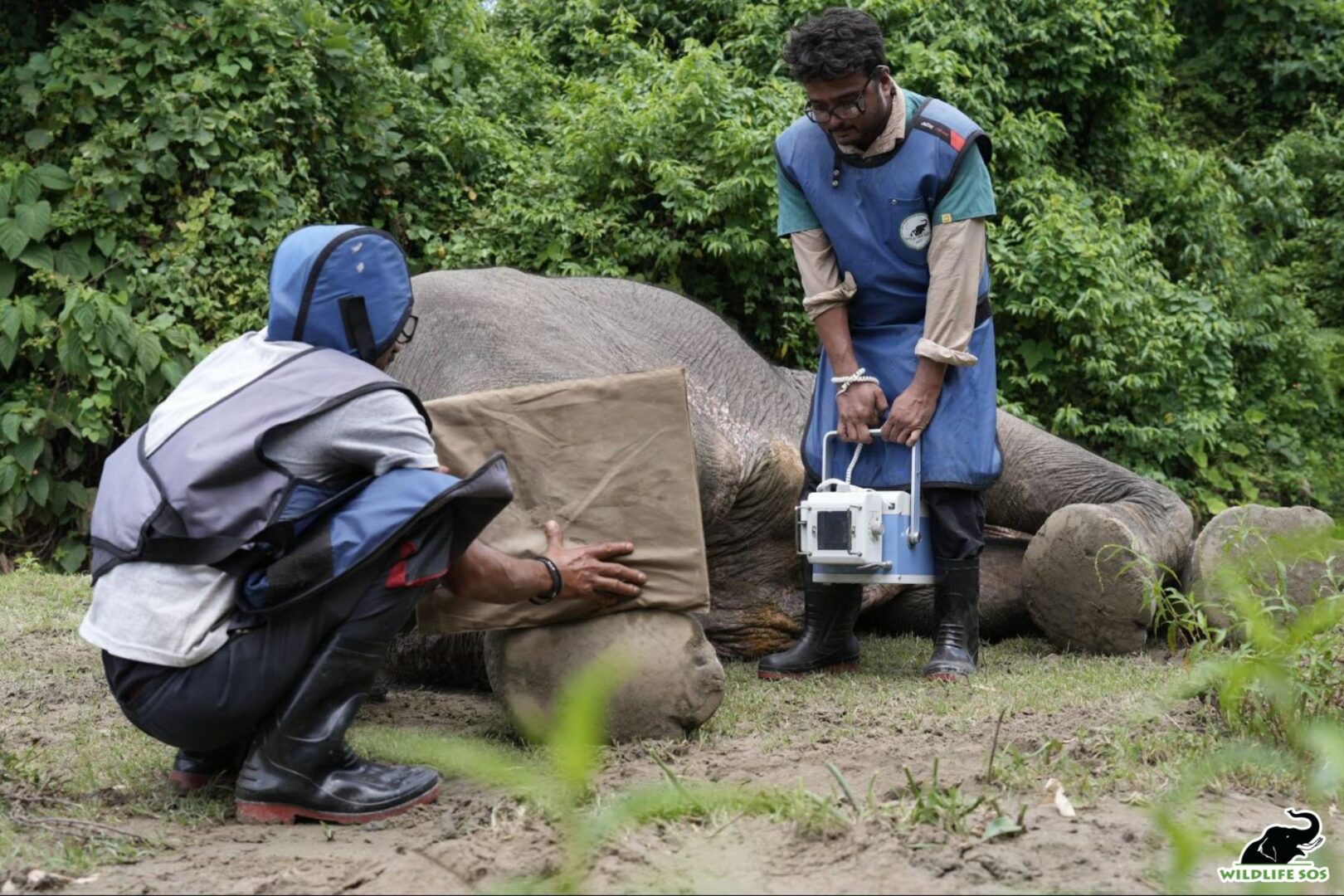
How has your experience been working with Wildlife SOS and the co-founders?
Before Wildlife SOS, conservation was something I only read about in books and heard in lectures. It was more imagination than reality. But at Wildlife SOS, I finally experienced true conservation in action. The organisation’s holistic approach and conflict-mitigation strategies are commendable, and I learn something new every single day. I’m deeply grateful to both co-founders for believing in me.
Ms. Geeta Seshamani has been a guiding light in my life — a true angel who has shaped my behaviour and personality. From Kartick (Satyanarayan) sir, I draw endless inspiration — his energy, dedication, and tireless work ethic recharge our team and keep us committed. He is my role model for professional life.
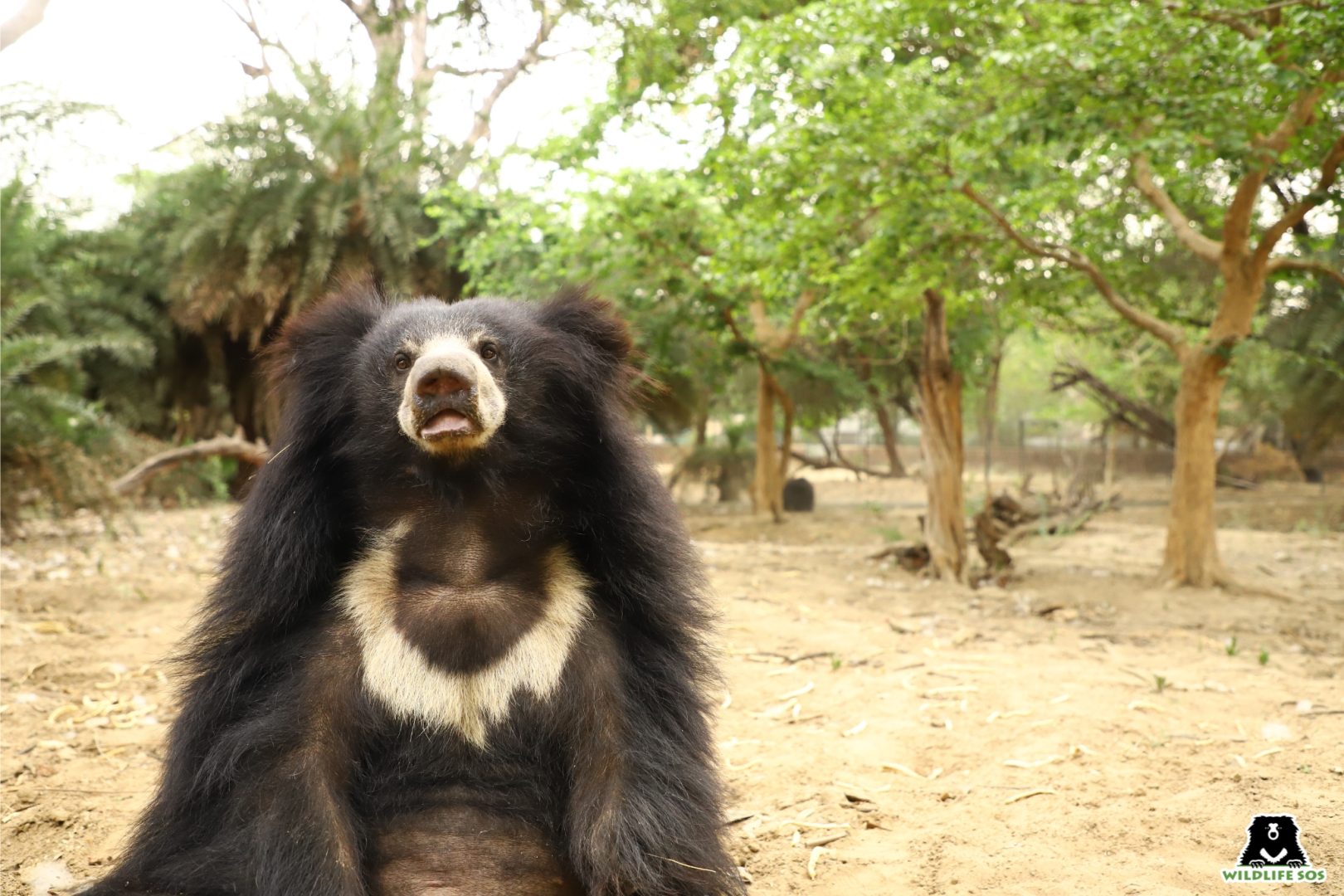
What message would you like to give readers about elephants?
I hope those reading this are well-informed and educated. I say this because during my time treating Ramu the elephant in Udaipur, I saw something that shook me.
There was a priest who was using Ramu to bless devotees in exchange for money. But what was more shocking was the kind of people who supported this — wealthy, educated individuals who brought fruits, participated in rituals, and enabled this exploitation.
When Ramu passed away, they even organised a roadshow at night with music and drums — a glorification that might inspire the priest to exploit more elephants. It made me realise that education doesn’t always lead to awareness. People need to become truly informed and take a stand — otherwise, this cycle of cruelty will never end.

In a world that often celebrates loud victories, Dr. Pramod reminds us of the quiet strength found in compassion, humility, and unwavering service. His story is not just one of medical expertise, it’s a testament to what happens when dedication meets heart. If you would like to witness the care given to rescued elephants, write to us at visit@wildlifesos.org. You can also help us to carry on providing required treatments for rehabilitated elephants by making a donation. To stay connected with our conservation work, do subscribe to our newsletter.
Feature Image © Wildlife SOS/ Mradul Pathak

